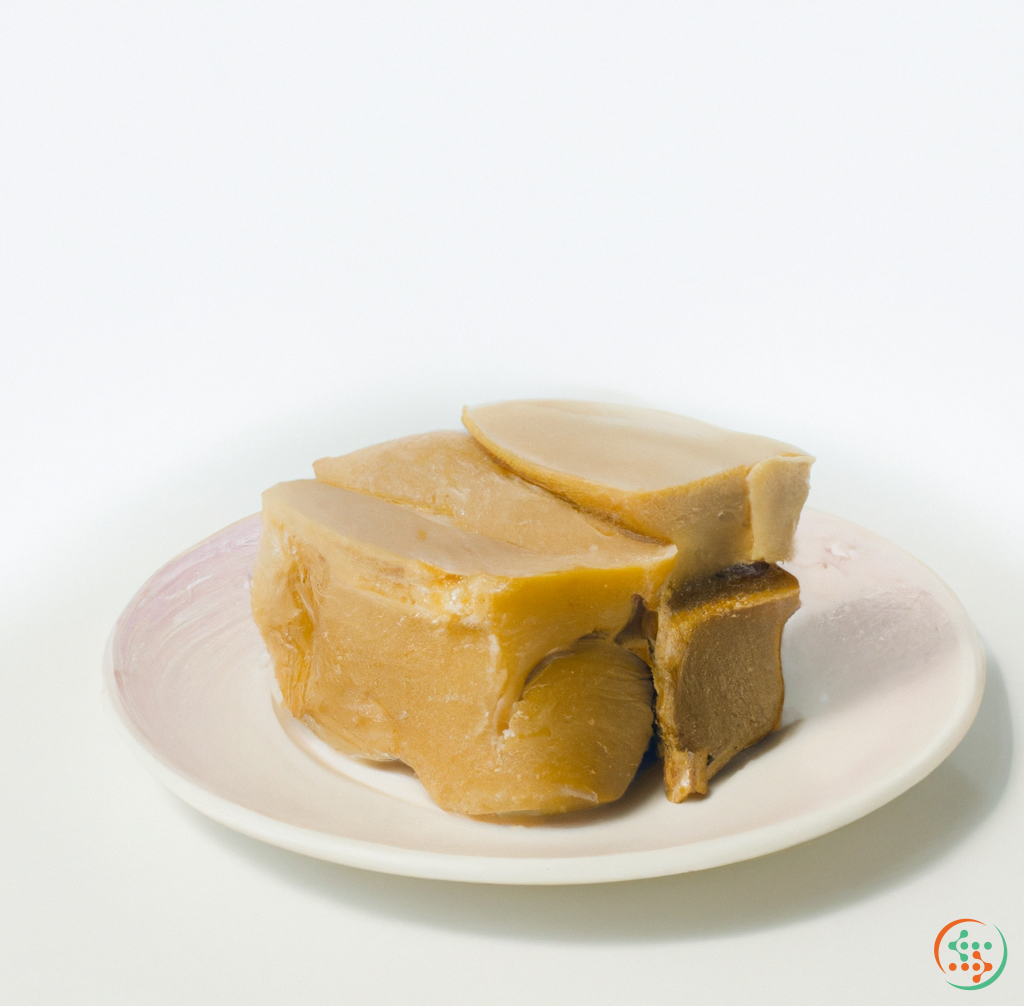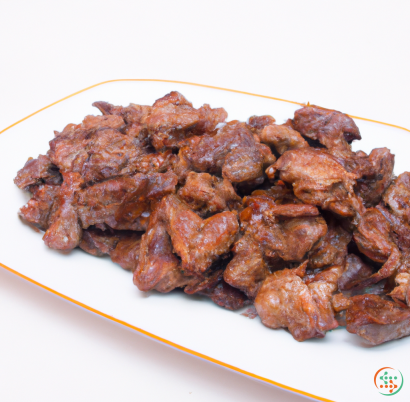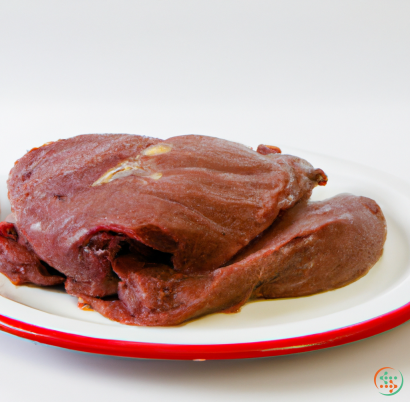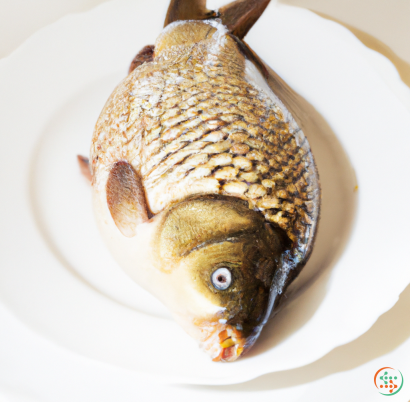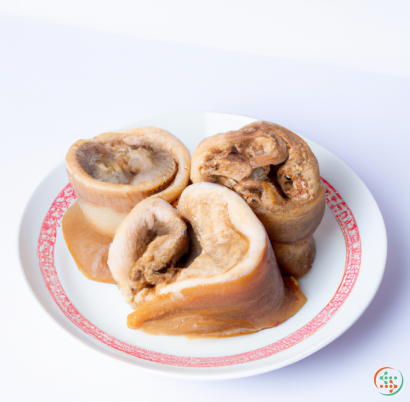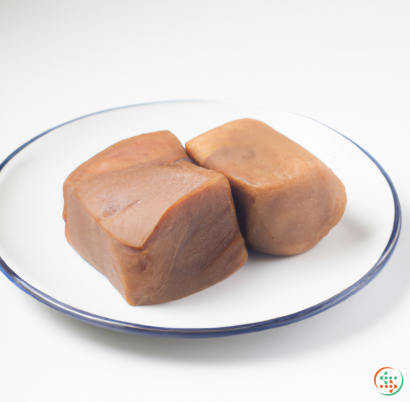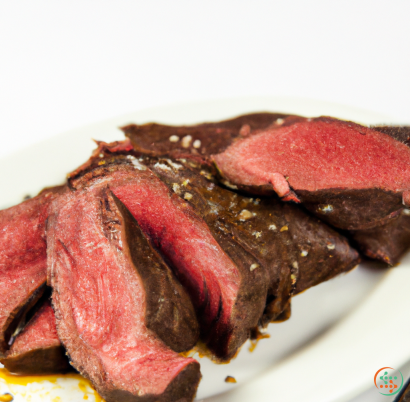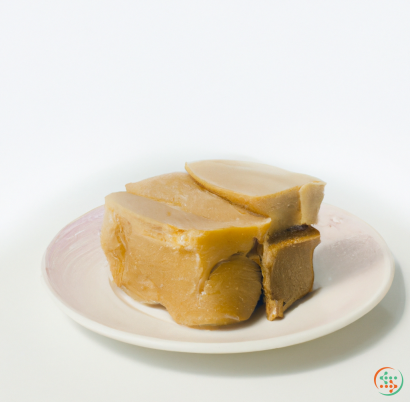Mutton Tallow
.
Mutton tallow is a type of fat derived from sheep that is used in a variety of ways, ranging from cooking to animal feed to body care products. Historically, this fat has been treasured for its nutritional benefits and multipurpose uses and has been utilized for centuries around the world.
Mutton tallow is most commonly made from the fat that is rendered from the lower parts of sheep, such as the tail, kidneys, and other organ meats, although it can also include fat from the mutton’s back, neck, and flank. Tallow is the term used to refer to any type of rendered animal fat. Depending on the sheep breed and age, the fat can be either hard or soft. Hard mutton tallow is what is most often used in cooking, and it can be yellow or white in color.
Once the mutton tallow has been rendered and cooled, it can be used in a number of applications. One of the primary uses is as a cooking fat. Before the advent of vegetable oils, mutton tallow was favored for its flavor and greasy texture. It is still frequently used today in Indian and Pakistani cooking, as well as in some African and Middle Eastern cuisines. Mutton tallow can be used to fry, sauté, and roast meats, vegetables, and potatoes.
Mutton tallow is also used for baking and confectionery items. It is sometimes used in kitchens to make pies, biscuits, pastries, and cakes. Before refrigeration was common, mutton tallow was also used to lubricate knives and pastries, a task that it still performs extremely well. In addition, the tallow’s high smoking point makes it an ideal fat for deep-frying foods, such as French fries and chicken wings.
Mutton tallow is highly nutritious and contains similar levels of saturated fat as butter. On a per-gram basis, it has twice as much monounsaturated fat and more than twice the amount of polyunsaturated fat. However, it also contains a much higher amount of butyric acid and vitamin A than butter.
In addition to using tallow for cooking and baking, it can also be used as a fuel for lamps and wax for candles. Mutton tallow candles emit a pleasant odor and are naturally fragrant as compared to petroleum-based candles.
Mutton tallow also has a number of uses in body care and health products. It is commonly used to make soaps and lip balms, as it is rich in fatty acids which helps to moisturize the skin. It is an effective moisturizer, so it can also be used to treat eczema, psoriasis, and minor burns. Mutton tallow is also believed to possess wound healing properties and can be used to heal cuts and abrasions. It is also thought to reduce wrinkles and redness due to its anti-inflammatory properties.
Finally, mutton tallow can also be used as an animal feed. For centuries, farmers and ranchers have used this fat combined with other grains in order to feed their livestock. It is high in essential fatty acids and can be used to supplement the diets of farm animals.
Mutton tallow has multiple practical and multipurpose uses, making it an incredibly versatile fat. Whether used to cook and bake or make body care products, it is a beloved staple with many cultures and has been used for centuries. It impart flavors, lubricates knives, and provides essential fatty acids for animals, making it invaluable for its multiple uses.
Mutton tallow is a unique, yet surprisingly common, ingredient used in various cooking and baking recipes around the world. Though its name may sound unfamiliar, mutton tallow is an essential part of many dishes. Its importance in food preparation, dating back centuries, lies in its ability to add flavor, texture, and moisture to dishes that are often high in fat and calories. In this blog post, we will explore the curious world of mutton tallow, examining how it is made and tracing it from farm to fork.
Mutton tallow is a type of rendered animal fat. Rendering is a process where fat is melted down in order to separate the fat from any remaining tissue or skin. This process can be performed at home, but is often done by commercial vendors. The fat used in the rendering process is most commonly sourced from cattle, pigs, sheep, and horses. In the case of mutton tallow, it is sheep fat that is used.
Though technically fat, mutton tallow is not the same as the layer of fat found directly on a sheep's body. Sheep fat is typically found just underneath the skin, commonly referred to as suet. Suet is a hard, waxy fat that clings to a sheep's internal organs and muscles. Suet is considered to be the highest quality form of fat when it comes to rendering and is often praised for its low levels of impurities.
Once the fat has been obtained from the animal, it can then be processed into mutton tallow. In the rendering process, the fat is melted down in large industrial pots to separate the fat from the solids. During this process, more impurities are removed from the fat, such as bone and sinew, resulting in a smoother, more palatable product. The tallow is then filtered and cooled before being packaged and sold.
Mutton tallow is often praised for its flavor and moisture-retaining properties. The fat found within one's diet can greatly improve the flavor of dishes. When used, the fat in mutton tallow coats proteins, locking in moisture and helping to create a rich, flavorful product. The result of this is increased palatability, as well as improved palatability and mouthfeel.
Mutton tallow is also packed with many essential vitamins and minerals. Studies have revealed that mutton tallow contains various fatty acids, such as oleic acid and linoleic acid, which have both been linked to many health benefits. Mutton tallow also contains essential minerals like iron, phosphorus, and magnesium, which are essential for healthy bones and muscles.
Mutton tallow is an increasingly popular ingredient in the culinary world. It can be found in stores across the country and is used by home cooks and professional chefs alike. From roast potatoes and pies to pastries, cakes, and other baked goods, mutton tallow is a versatile cooking fat that can be used in many everyday recipes. As such, understanding the journey that the mutton tallow takes from the farm to the dinner plate is essential in understanding its many benefits.
Mutton tallow is produced on traditional sheep farms. After the sheep have been shorn of their wool, the fat is extracted from around the sheep's organs and muscles. This fat is then cleanly processed and rendered into mutton tallow. The rendered tallow is then packaged and sent to wholesalers and retailers, who then supply it to restaurants and supermarkets.
The mutton tallow is then purchased by home cooks, chefs, and bakers, who use the oil in their dishes. Due to its moisture retaining abilities, the tallow can be used in savory dishes like roast potatoes and pies, as well as sweet dishes like cakes and pastries. By adding it to their dishes, chefs and cooks are able to add flavor and texture to their recipes, while also improving the overall healthiness of the dish.
As we have seen, mutton tallow is an important and unique ingredient that is used in many recipes around the world. Not only does it add flavor and texture to dishes, but it also contains essential vitamins and minerals that are essential for a balanced diet. By now, tracing the adventure that mutton tallow takes from Livestock Farm to the dinner plate should be slightly more clear.
Mutton tallow is an essential addition to any recipe and an important part of culinary history. Its importance cannot be understated, and hopefully with this blog post, understanding its journey from farm to fork has become easier.
| Vitamin D | 0.7 ug | |
| Vitamin D3 | 0.7 ug | |
| Vitamin E | 0.0028 grams | |
| Vitamin B4 | 0.0798 grams |
| Selenium | 0.2 ug |
Daily Value 0.055 mg
|
| Total Sugars | 0 ug |
per 100g
|
| Myristic acid (14:0) | 3.8 grams |
|
| Palmitic acid (16:0) | 21.5 grams |
|
| Stearic acid (18:0) | 19.5 grams |
|
| Total Saturated fatty acids: | 44.8 g | |
| Oleic acid (18:1) | 37.6 grams |
|
| Palmitoleic acid (16:1) | 2.3 grams |
|
| Total Monounsaturated fatty acids: | 39.9 g | |
| Linolenic acid (18:3) | 2.3 grams |
|
| Linoleic acid (18:2) | 5.5 grams |
|
| Total Polyunsaturated fatty acids: | 7.8 g | |
| Cholesterol | 0.1 grams |
|
| Total Sterols: | 0.1 g | |
